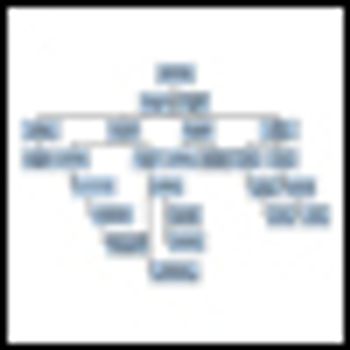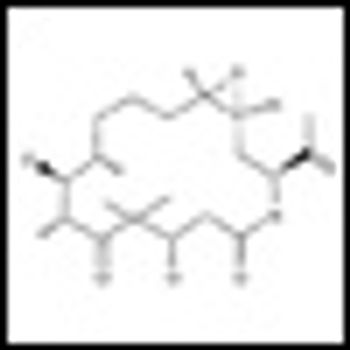
Neoadjuvant lapatinib (Tykerb) decreased tumorigenic stem cells in primary breast cancers, Jenny Chang, MD, of Baylor College of Medicine, Houston, reported at the 6th European Breast Cancer Conference.

Your AI-Trained Oncology Knowledge Connection!


Neoadjuvant lapatinib (Tykerb) decreased tumorigenic stem cells in primary breast cancers, Jenny Chang, MD, of Baylor College of Medicine, Houston, reported at the 6th European Breast Cancer Conference.

SAN DIEGO-Even one alcoholic drink a day can raise the risk of breast cancer, according to an analysis of 184,418 postmenopausal women in the NIH-AARP Diet and Health Study presented at the 2008 American Association of Cancer Research annual meeting (abstract 4168).

A HER2/neu peptide–based T-cell immunotherapy that reduces recurrences in low HER2 expressors could be important for patients ineligible for trastuzumab.

Breast cancer treatments today are likely to cause less physical deformity from surgery than a half-century ago, but are more complex and extend over a longer period of time. Women today are often well informed about the details of their cancer diagnosis and prognosis, and are increasingly involved in shared decision-making regarding treatment.

In her article on the psychological and social aspects of breast cancer, Dr. Ganz pays fitting tribute to the pioneering and prescient efforts of a great man who tried hard to bring more humanity into the management of the disease.

The first generation of clinical trials addressing adjuvant treatment questions in breast cancer has confirmed the important role of endocrine manipulations and chemotherapy, improving disease-free and overall survival.

Worldwide, breast cancer is by far the most frequent cancer affecting women, with over 1 million new cases each year, and the leading cause of female cancer-related deaths. During the past decade, substantial progress has been made in the treatment of breast cancer, due to focused collaborative efforts in education, practice, and research.

The paper by Vogel is an interesting personal review of the use of selective estrogen-receptor modulators (SERMs) to prevent breast cancer, raising many important issues and concerns related to this controversial topic.

Novel agents are adding to the wide choices of standard chemotherapies already available. This review offers an approach to the selection of individualized and rational therapies for patients with metastatic breast cancer.

In order to frame this commentary on Higgins and Wolff’s review of current treatment options for metastatic breast cancer, I started with a PubMed search of Dr. Marty Abeloff’s work from more than 3 decades ago. This was partly motivated by my own curiosity about a leader whose early career was largely unknown to me, and partly by the desire to see whether “the more things change, the more they remain the same.”

Women in the Northeast US are more likely to receive breast-conservation therapy, while those in the South are more often recommended for mastectomies for the treatment of invasive breast cancer, according to a study presented at the 9th Annual Meeting of the American Society of Breast Surgeons (ASBS), held April 30 to May 4 in New York.

A novel intraoperative breast cancer probe is showing significant promise in the reduction of repeat procedures in patients undergoing breast-conserving surgeries, according to a study presented at the ASBS meeting.

Breast cancer is the most common cancer in women living in the developed world. One in eight women will be diagnosed with breast cancer during their lifetime. The majority of newly diagnosed patients have early-stage disease.

The treatment of microscopic metastatic breast cancer with adjuvant systemic therapy has undergone significant changes in recent years. At the same time, our understanding of the biology of breast cancer has also improved, predominantly as a consequence of data obtained from cDNA microarrays.

Several large, prospective trials have evaluated tamoxifen compared with placebo for breast cancer risk reduction in women at increased risk for breast cancer. Analysis of the large, prospective breast cancer risk-reduction trials that used tamoxifen estimated that tamoxifen decreased breast cancer incidence by 38% on average and estrogen receptor–positive tumors by 48%.

Victor Vogel’s excellent review of the clinical basis for preventing breast cancer in high-risk women demonstrates the significant advances that have been made through the clinical trials mechanism. However, it is the progress in deciphering the link between hormones and the development and growth of breast cancer that is the true success story in this setting.

Choline, an essential nutrient found in foods such as eggs, is associated with a 24% reduced risk of breast cancer, according to a study supported by a grant from the US National Institutes of Health (NIH), to be published in the Federation of American Societies for Experimental Biology (FASEB) Journal's print issue in June.This study adds to the growing body of evidence that links egg consumption to a decreased risk of breast cancer.

CPM may be a rational choice for patients with known BRCA mutations, patients who have received therapeutic chest radiation, and some mastectomy patients.

This article reviews recent findings from clinical trials of epothilones and discusses future directions for the use of these agents in cancer therapy, with a focus on the two most-studied epothilones to date: ixabepilone and patupilone.

Epothilones, representing a newer class of naturally occurring antimicrotubule macrolides, have emerged as cytotoxic agents with significant antitumor activity against tumors that are resistant to taxanes.

Ms. Donovan and Dr. Vahdat present a review of the literature on a novel class of agents, the epothilones, focusing in particular on the two most-investigated agents to date-patupilone and ixabepilone (Ixempra).

Xoft, Inc’s Axxent Electronic Brachytherapy System, initially FDA approved for accelerated partial breast irradiation in patients with resected early-stage breast cancer, has now received expanded FDA clearance for the treatment of other cancers or conditions where radiation therapy is indicated.

Pilot studies presented at the 2007 San Antonio Breast Cancer Symposium have found robust activity for the multi-targeted tyrosine kinase inhibitor sunitinib (Sutent) when given with docetaxel (Taxotere) (abstract 6079) or paclitaxel (abstract 6078) as first-line treatment for patients with advanced breast cancer.

An international team of researchers has developed a predictive model that accurately estimates which breast cancer patients may relapse after neoadjuvant endocrine therapy, Matthew Ellis, MD, PhD, said at the 2007 San Antonio Breast Cancer Symposium (abstract 62).

Digital tomosynthesis appears to be more sensitive than digital mammography for detecting breast cancer in a clinical setting, Debra M. Ikeda, MD, of Stanford University, reported at the 2007 San Antonio Breast Cancer Symposium (abstract 46).